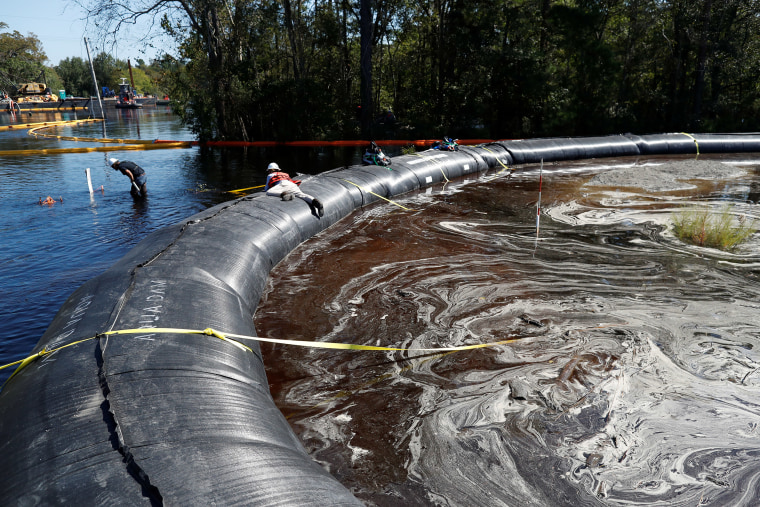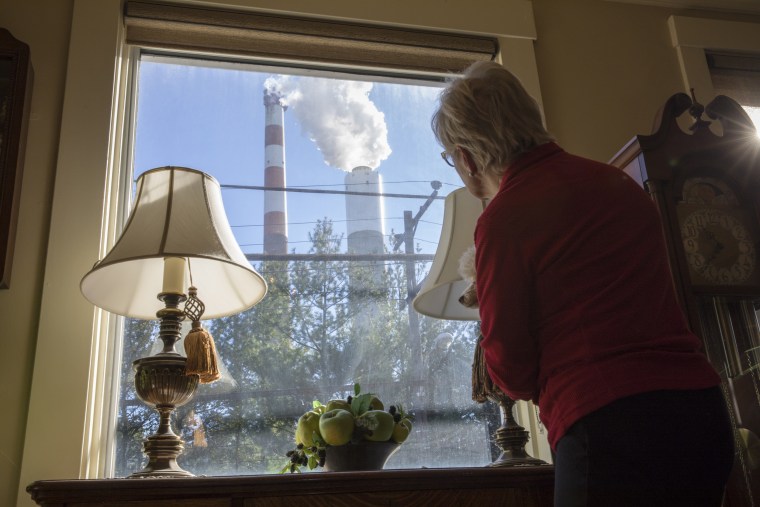Earlier this month, President Donald Trump’s Environmental Protection Agency relaxed rules meant to keep dangerous heavy metals out of water supplies across the country. Arsenic, lead and mercury — toxins known to contaminate drinking water and cause cancer, birth defects and stunted brain development in kids — are among the toxins that leach out of coal ash. Until now, the coal plants responsible for that coal ash were required to monitor such toxins and install devices to keep it out of water supplies. But Trump’s administration thinks regulating such toxins is unnecessary.
What does this mean? Despite ample scientific evidence showing that it will increase health and safety risks, the Trump administration just gave the coal industry permission to dump toxic metals into our water supplies.
The Trump administration just gave the coal industry permission to dump toxic metals into our water supplies.
For Americans who value the environment, public land protections and science, the past couple of years have been difficult to take, to say the least. This is no accident, of course, because those values stand in the way of industry profit, and the Trump administration has made no secret of its desire to boost industry profits at the expense of American well-being.
It’s hard to believe that the executive branch would act against the needs and values of everyday Americans and intentionally reduce penalties for those who seek to pollute our air and water. And yet, this is exactly what the current administration is doing. In fact, there has been no effort to hide the anti-environment wish lists behind recent executive actions. To the contrary, federal agencies seem to be competing with one another to be the biggest boosters of big industry.
At the Interior Department, where I worked before being reassigned in retaliation for blowing the whistle on climate change denial, the incoming political team published a request for input on their regulatory reform agenda and immediately received a long and detailed wish list from the American Petroleum Institute (API), an oil and gas lobbying organization. Other industry interests, such as the National Mining Association and ConocoPhillips, followed suit.
This summer, a public lands advocacy organization called the Center for Western Priorities checked in on how Interior was doing fulfilling those wish lists, and the results were damning. The center looked at 53 industry requests and found that the agency had already met 36 of them and had another dozen in the pipeline. Of those 53 requests, only five had not yet been addressed in some way.
The EPA, not to be outdone, satisfied six of the eight demands that it had received from the American Petroleum Institute in less than a year.
Since then, the EPA has been working overtime to earn bragging rights as the most polluter-friendly agency in modern history. Setting up a Regulatory Reform Task Force, it received nearly half a million responses to requests for comments, the vast majority of them in favor of greater protections. But some comments were more important than others. A confidential memo from Robert Murray, a coal baron and Trump donor, to Vice President Mike Pence, provided a detailed action plan for the EPA and the Department of Energy. This plan included such big-ticket items as withdrawing from the Paris agreement and cutting the EPA staff in half. Within a year, 16 of Muray’s anti-environment wishes had already come true.
And the drumbeat continues at the EPA, as it chips away at polluter requests. EPA political appointees actually circulated an internal to-do list that only included items submitted by the pesticide and oil and gas industries seeking to put our health and safety at greater risk.

The results from all of this industry input have been impressive. In addition to a long list of attacks on science that have been well-chronicled by the Union of Concerned Scientists, the EPA has rolled back the Clean Power Plan, loosened restrictions on emissions of the potent greenhouse gas methane, overturned the Stream Protection Rule meant to restrict water pollution from coal mining, repealed the Waters of the United States rule that restricted the use of polluting chemicals near waterways, and refused to ban chlorpyrifos, a toxic chemical linked to serious health issues for kids.
These actions fly in the face of scientific evidence, but even the role of science in policy is under attack. Just last week, the EPA sent a new rule to the White House for the president’s signature, a rule that abandons the concept of science-based protections entirely. The rule will ban the use of any scientific studies that do not make all of their data public. While it sounds innocent, this would disallow the use of virtually all public health studies because health records are nearly always confidential. This action put the administration’s contempt for American health and safety on vivid display.
This action put the administration’s contempt for American health and safety on vivid display.
So it’s not really a surprise that Trump’s EPA has now relaxed the coal ash rules in defiance of scientific fact and health impacts. Adding insult to injury, however, the EPA’s justification for doing so was a lesson in gaslighting. Despite all evidence to the contrary, it claimed that relaxing the rules will result in a reduction of 100 million pounds of pollutants each year because coal plants will now volunteer to invest in new safeguards. There is no evidence to suggest that this would ever happen, but such a response does reflect this administration’s disdain for the processes that safeguard America.
There is some good news amidst all of this bad behavior. Public interest groups have been acting as watchdogs on these blatant violations of the public trust and the courts have sided with health and safety on many occasions. As of October, Earthjustice had won 30 of 35 challenges to Trump anti-environmental rollbacks, and many other polluter-friendly rules are still in litigation.
There is nothing wrong with encouraging American businesses, but these rules are in place to ensure that profits do not become more important than individual well-being. Every day that the EPA ticks off another anti-environment item on the polluter wish list, the social and financial consequences are being shifted from polluting industries to at-risk communities.

